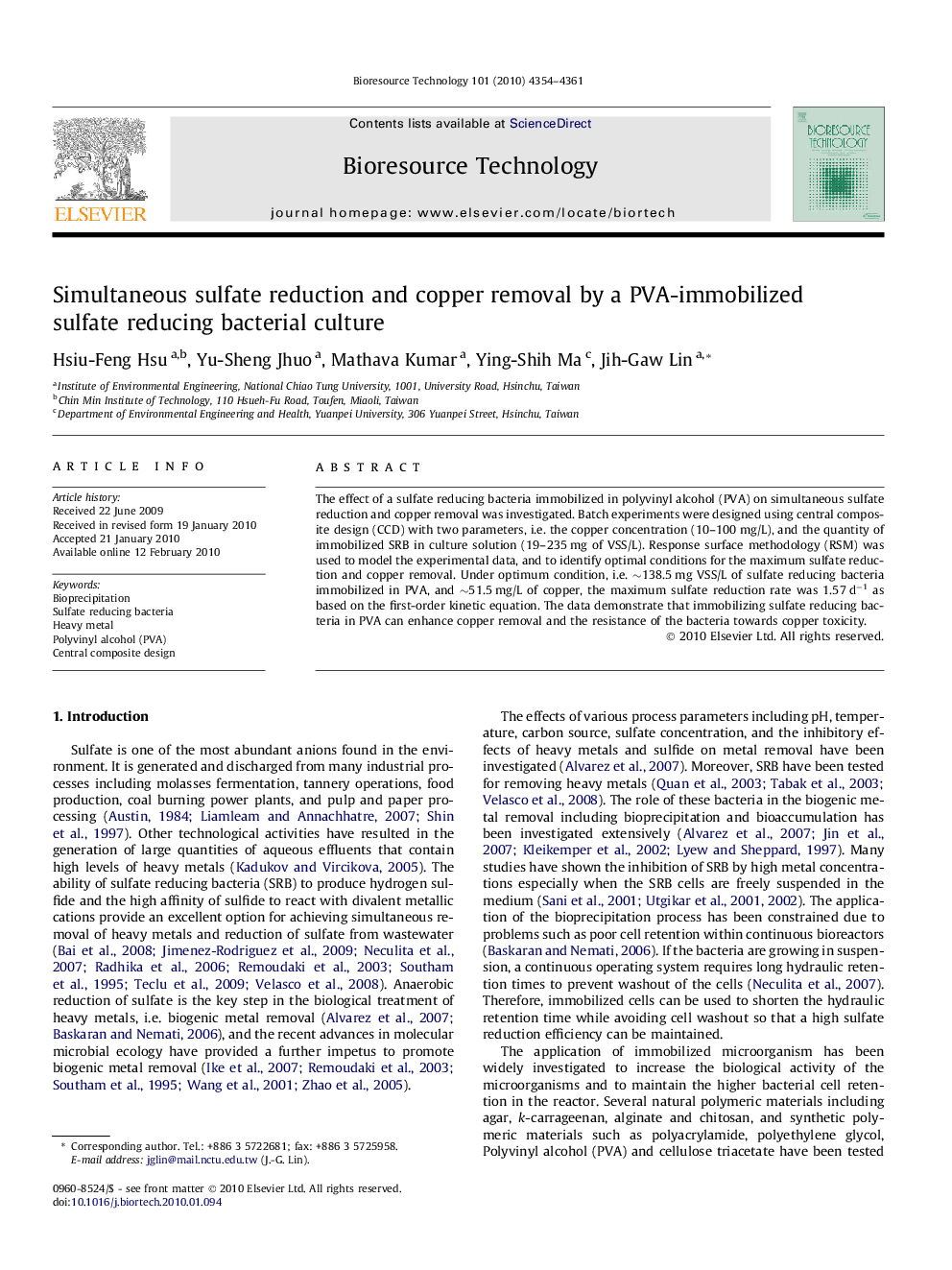| Article ID | Journal | Published Year | Pages | File Type |
|---|---|---|---|---|
| 10395604 | Bioresource Technology | 2010 | 8 Pages |
Abstract
The effect of a sulfate reducing bacteria immobilized in polyvinyl alcohol (PVA) on simultaneous sulfate reduction and copper removal was investigated. Batch experiments were designed using central composite design (CCD) with two parameters, i.e. the copper concentration (10-100Â mg/L), and the quantity of immobilized SRB in culture solution (19-235Â mg of VSS/L). Response surface methodology (RSM) was used to model the experimental data, and to identify optimal conditions for the maximum sulfate reduction and copper removal. Under optimum condition, i.e. â¼138.5Â mg VSS/L of sulfate reducing bacteria immobilized in PVA, and â¼51.5Â mg/L of copper, the maximum sulfate reduction rate was 1.57Â dâ1 as based on the first-order kinetic equation. The data demonstrate that immobilizing sulfate reducing bacteria in PVA can enhance copper removal and the resistance of the bacteria towards copper toxicity.
Keywords
Related Topics
Physical Sciences and Engineering
Chemical Engineering
Process Chemistry and Technology
Authors
Hsiu-Feng Hsu, Yu-Sheng Jhuo, Mathava Kumar, Ying-Shih Ma, Jih-Gaw Lin,
